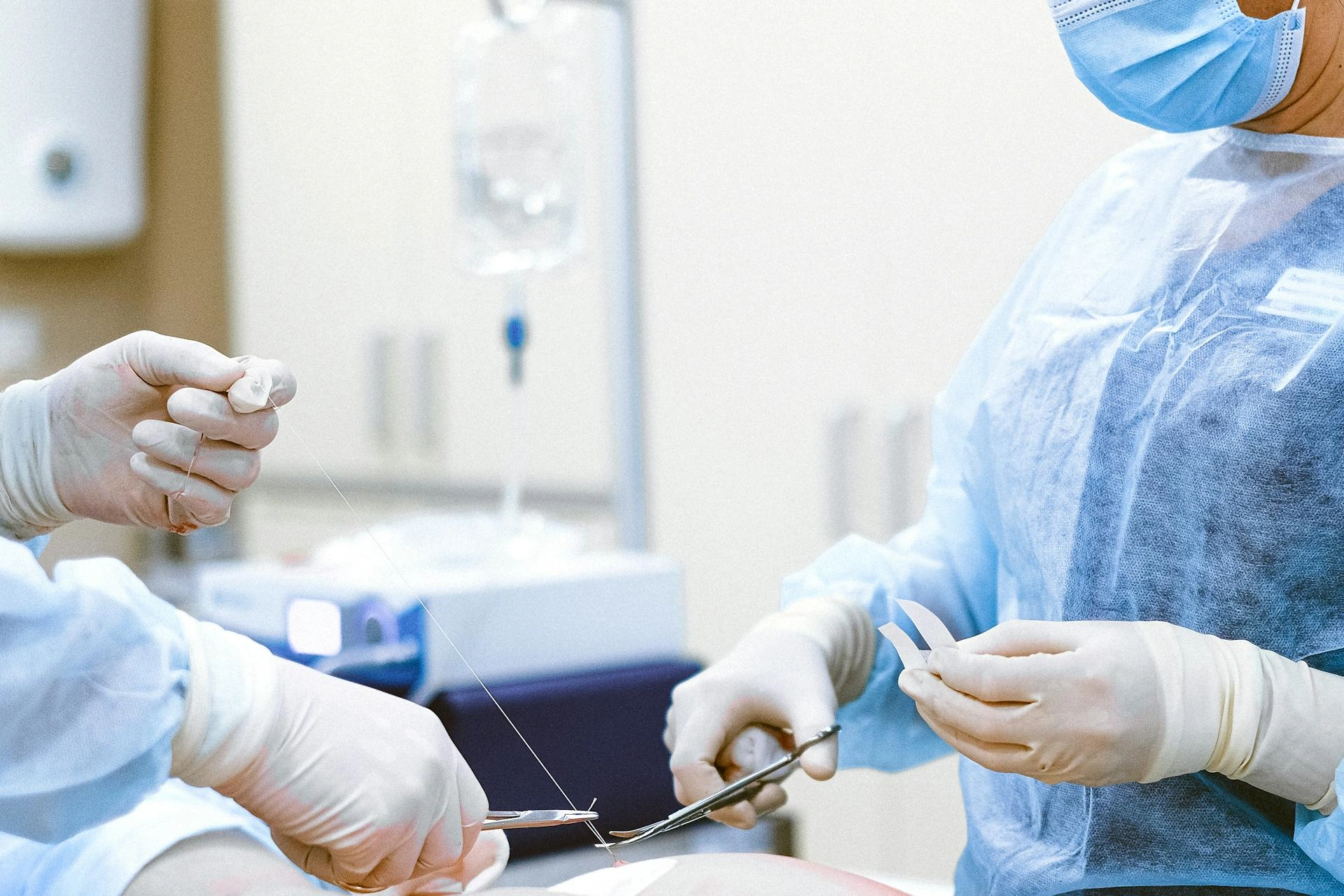Releasing the potential of private 5G for healthcare

John E. Kaye
- Published
- Home, Technology, Uncategorized

Viswanathan Ramaswamy of Tata Communications unpacks private 5G use cases for the healthcare sector, and outlines the benefits the technology will have
The healthcare industry is constantly evolving and adapting to new technologies that improve patient outcomes and care. And one of the latest technologies to emerge as a leading solution for innovation in healthcare is private 5G networks. Today, 5G is approximately 100 times faster than its predecessor, 4G, and has the capacity to halve latency compared to Wi-Fi 6, according to PwC’s ‘5G in Healthcare’ report. Furthermore, of all existing wireless technologies, 5G enables the most amount of data to be transferred at once.
With this kind of power, 5G networks hold the potential to transform healthcare by providing faster, more reliable connectivity. The technology can help professionals and patients alike by fuelling the development and capabilities of innovative applications and services. But what does this really mean in practice? And what private 5G use cases exist today that demonstrate how this technology is driving innovation for the healthcare sector? Let’s find out.
What are private 5G networks?
Private 5G networks are essentially a dedicated cellular network that’s built and managed by a specific organisation, such as a hospital or healthcare provider. These networks use the same technology as public 5G networks, but they operate independently of public infrastructure. As such, private 5G networks can be customised to meet the specific needs of an organisation, and provide better coverage and performance in areas where public networks may not be available. So, what does this mean for the healthcare sector specifically?
One of the key benefits of private 5G networks is that they offer low-latency and high-bandwidth connectivity, so can support a range of innovative applications. For healthcare today, such applications include transmitting high-resolution medical images in real-time, enabling remote consultations between doctors and patients, and supporting telemedicine.
Let’s take a closer look at some private 5G use cases and how the technology is supporting innovative healthcare solutions:
- Secure and fortified comms within hospitals – Some 39 million individuals have been affected by healthcare data breaches in the US so far this year, according to the HHS Office for Civil Rights (OCR) data breach portal. It is a sector increasingly under threat from cyber criminals, with a reported 44% increase in attacks last year. Known critical vulnerabilities were found in 53% of digital medical devices and other internet-connected products in hospitals, according to FBI research. The rising cyber threat to hospitals has meant the Food and Drug Administration (FDA) will now require medical devices to meet specific cybersecurity guidelines. Private 5G has a clear role to play by increasing the security of a hospital’s network and thus better protecting patient data and devices.
- Telemedicine – Telemedicine has become increasingly popular in recent years, as it allows patients to receive care from any location, at any time. Private 5G networks can support telemedicine applications by providing the high-speed connectivity necessary for video consultations, remote monitoring of patient data, and other telemedicine services.
But to realise the full potential of private 5G networks when it comes to telemedicine also means ensuring network security and data privacy is a top priority. Medical records are considered to be some of the most sensitive data existing today. So, in order for 5G to facilitate telemedicine and improve healthcare capabilities, data must be protected from cyber-attacks at all times. Here, machine learning (ML) and AI can play a big role in identifying and mitigating cyber-incidents. With high levels of automated intelligence and threat management capacities, private 5G use cases in healthcare can be secured – from traffic analysis to threat identification and isolation.
- Medical Data Transfer: Imaging, Wearables and IoT Devices – Private 5G networks can provide the low-latency, high-bandwidth connectivity required to transmit high-resolution images or large quantities of data in real-time. In practice, this means healthcare professionals can make accurate diagnoses and treatment decisions based on fast, state-of-the-art medical imaging.
Likewise, wearable devices and IoT sensors are becoming increasingly popular in healthcare as they can provide valuable data on patients’ health and wellbeing. Healthcare professionals can use private 5G networks to support these devices with the low-latency connectivity required to continuously transmit data in real-time – enabling doctors and caregivers to make more informed decisions about patient care.
Remote-assisted surgery
Specialist surgeries will not necessarily have to be carried out in one hospital, widening access to healthcare for the public. The connectivity and reliability of private 5G enables expert surgeons to remotely assist procedures, without the need to be physically present in the same location.
Looking more to the future, PwC’s ‘5G in Healthcare’ report illustrates the opportunity for private 5G networks to aid complex operations when using next-generation technology in the future – from AI to augmented reality, virtual reality and robotic equipment.
What are the benefits?
Private 5G networks offer a range of benefits for the healthcare industry, including faster, more reliable connectivity with high-bandwidth and low-latency to support a range of innovative healthcare applications and services.
One particular area that serves to benefit from private 5G networks is patient outcomes. With healthcare professionals empowered to make more informed decisions about patient care, they can foster more improved outcomes and better overall health. Similarly, private 5G networks can help streamline workflows and reduce administrative overhead, increasing efficiencies across the healthcare sector.
But with advanced technology comes the need for enhanced security. 5G, alongside other technologies such as AI or ML, can enable cutting-edge protection with encryption and access controls – helping to protect patient data and ensure compliance with regulatory requirements.
The future of healthcare with private 5G networks
Today’s healthcare environment is grappling with reduced funding and increased pressure to deliver at pace. But no person is the same, so alongside enhanced data analytics to support diagnostics and procedures, the sector is trying to deliver more personalised, customisable healthcare and treatments.
Private 5G networks can be customised to meet the specific needs of a healthcare organisation based on a combination of factors, including applications, network architecture, speed, scale and budget. When it comes to the healthcare sector and private 5G networks, finding the right partner to support deployment – as well as continued management post-rollout – is fundamental to ensuring the longevity of 5G-enabled solutions.
Innovation in healthcare won’t stand still. Healthcare providers need to know they have the flexibility to evolve and adapt without being tied to a particular solution or vendor. For instance, choosing a technology partner that’s agnostic to hardware or network equipment so any combination of equipment can be implemented. That way, the latest solutions will always be available for healthcare professionals and patients today, and tomorrow.
About the Author

Viswanathan Ramaswamy is Vice President, 5G & Digital Solutions Incubation at Tata Communications.
Sign up to The European Newsletter
RECENT ARTICLES
-
 Make boards legally liable for cyber attacks, security chief warns
Make boards legally liable for cyber attacks, security chief warns -
 AI innovation linked to a shrinking share of income for European workers
AI innovation linked to a shrinking share of income for European workers -
 Europe emphasises AI governance as North America moves faster towards autonomy, Digitate research shows
Europe emphasises AI governance as North America moves faster towards autonomy, Digitate research shows -
 Surgeons just changed medicine forever using hotel internet connection
Surgeons just changed medicine forever using hotel internet connection -
 Curium’s expansion into transformative therapy offers fresh hope against cancer
Curium’s expansion into transformative therapy offers fresh hope against cancer -
 What to consider before going all in on AI-driven email security
What to consider before going all in on AI-driven email security -
 GrayMatter Robotics opens 100,000-sq-ft AI robotics innovation centre in California
GrayMatter Robotics opens 100,000-sq-ft AI robotics innovation centre in California -
 The silent deal-killer: why cyber due diligence is non-negotiable in M&As
The silent deal-killer: why cyber due diligence is non-negotiable in M&As -
 South African students develop tech concept to tackle hunger using AI and blockchain
South African students develop tech concept to tackle hunger using AI and blockchain -
 Automation breakthrough reduces ambulance delays and saves NHS £800,000 a year
Automation breakthrough reduces ambulance delays and saves NHS £800,000 a year -
 ISF warns of a ‘corporate model’ of cybercrime as criminals outpace business defences
ISF warns of a ‘corporate model’ of cybercrime as criminals outpace business defences -
 New AI breakthrough promises to end ‘drift’ that costs the world trillions
New AI breakthrough promises to end ‘drift’ that costs the world trillions -
 Watch: driverless electric lorry makes history with world’s first border crossing
Watch: driverless electric lorry makes history with world’s first border crossing -
 UK and U.S unveil landmark tech pact with £250bn investment surge
UK and U.S unveil landmark tech pact with £250bn investment surge -
 International Cyber Expo to return to London with global focus on digital security
International Cyber Expo to return to London with global focus on digital security -
 Cybersecurity talent crunch drives double-digit pay rises as UK firms count cost of breaches
Cybersecurity talent crunch drives double-digit pay rises as UK firms count cost of breaches -
 Investors with €39bn AUM gather in Bologna to back Italy’s next tech leaders
Investors with €39bn AUM gather in Bologna to back Italy’s next tech leaders -
 Axians and Nokia expand partnership to strengthen communications infrastructure across EMEA
Axians and Nokia expand partnership to strengthen communications infrastructure across EMEA -
 Forterro buys Spain’s Inology to expand southern Europe footprint
Forterro buys Spain’s Inology to expand southern Europe footprint -
 Singapore student start-up wins $1m Hult Prize for education platform
Singapore student start-up wins $1m Hult Prize for education platform -
 UK businesses increase AI investment despite economic uncertainty, Barclays index finds
UK businesses increase AI investment despite economic uncertainty, Barclays index finds -
 Speed-driven email security: effective tactics for phishing mitigation
Speed-driven email security: effective tactics for phishing mitigation -
 Short circuit: humanoids go for gold at first 'Olympics for robots'
Short circuit: humanoids go for gold at first 'Olympics for robots' -
 New IBM–NASA AI aims to forecast solar flares before they knock out satellites or endanger astronauts
New IBM–NASA AI aims to forecast solar flares before they knock out satellites or endanger astronauts -
 AI is powering the most convincing scams you've ever seen
AI is powering the most convincing scams you've ever seen



























